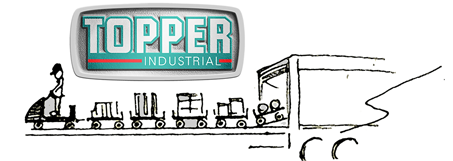- Improves safety by reducing motion, handling, and forklift movement. READ HERE.
- Improves quality by first defecting defects instead of creating a bad batch. READ HERE.
- Improves flexibility by shortening lead-times through processes (connected processes, smaller lot sizes). READ HERE.
- Improves scalability by making equipment that is efficient with smaller lot sizes. READ HERE.
- Reduces inventory by connecting processes and reducing lot sizes through quick changeover. READ HERE.
- Improves productivity by working on one thing at a time and cutting out wasted motion. READ HERE.
- Simplifies material replenishment by making the speed of material consumption steady and paced to a takt time. READ HERE.
- Frees up floor space by opening space used for inventory. READ HERE.
- Makes kaizen take root by exposing hidden problems and making them more visible. READ HERE.
- Improves morale by promoting cross-training and skill enhancement, as well as identifying and solving problems more quickly and reducing frustration. READ HERE.
Topper Industrial will use this blog to take a deep dive and look at this issue and benefits.
When plant floor workers see quantifiable results, they are satisfied, happier, and stay on the job. With very low unemployment, retaining great employees is critical. One piece material flow at a cellular manufacturing level allows for lower defects, personal and professional accountability, and generates job satisfaction.
Having materials brought to the line in a fork truck free environment improves morale. Manufacturing firms managed by expert engineers, frequently lose sight of communications objectives. All the automation technology is futile if employees are disengaged, or worse, unsafe. Employee engagement requires manufacturers to have a systematic and tested method of reaching employees with important messages. These approaches engage and influence attitudes and behaviors.
When automation tools and solutions are introduced and implemented, employee behaviors need to be reinforced. New systems often are met with employee resistance; effective regular communication tamps down attachment to current techniques and production processes. Managers on the plant floor and executive office must reinforce and promote information throughout the workforce. They need to understand the value proposition; line workers must see how they are able to better perform working in a small lot delivery manufacturing model.
Representational systems were developed by Bandler and Grinder; neuro-linguistic programming (NLP) explains how the human mind processes and stores information. More than 80% of plant floor workers relate best to a visual system. This notion has been frequently tested and statistically validated by shop floor workers who report: “I see what you’re saying,” indicating visual representation.
Manufacturers must include strategy-specific messages to help employees connect their day-to-day efforts with the aspirations of the company. It helps when manufacturing firms use strong visuals, such as pictures of people in action. Due to time constraints and production deadlines, employee communication messages must be kept simple and concise for maximum impact.
Too often management takes a tone of “us vs. them,” setting an adversarial tone rather that sharing stories from a variety of perspectives — the frontline, managers, and leadership. Quality communication is a discipline that must be shared from a people driven performance framework; it must inspire, educate, and reinforce.
All the technology systems are moot if the employee on the shop floor fails to grasp the notion of change management and business understanding. These communications often require consistent CEO and leadership messages. One piece material flow is a lean manufacturing concept requiring regular communication.
New Equipment Updates in the Fork Truck Free Process
Automation is often seen as a threat by some plant floor employees. New equipment may represent a feared reduction in working hours or a challenge in learning new technology. Much of this fear can be assuaged through effective employee communication. Manufacturers must openly share when and why new equipment is being ordered, what equipment it will replace, and why the investment is necessary. Direct lines of communication establish who is spearheading the equipment acquisition and (perhaps most importantly to employees) what difference it will make to operations, job functionality, and wages.
The engineering mindset is often project-oriented. This approach is often at odds with building long-term, loyal, and dedicated employees. Manufacturing CEOs and VPs of Operations may be unsure what to say or how to best communicate with plant floor workers. There is now a road map which integrates the efficacy of automation with employee engagement. The best automation without employee engagement is useless.
Topper Industrial (www.topperindustrial.com) is a leading manufacturer of material handling equipment. Topper provides lean material handling solutions to the supply chain.
Topper Industrial is able to engineer and design Industrial Carts (Mother / Daughter Cart Systems, Quad Steer Carts or Tracking Carts, Specialized Delivery Carts, Transfer Carts with Roller Deck, Static Carts, Rotation Carts, Tilt Carts or Kitting Carts), Industrial Cart Components (Parts Department), Industrial Containers (Corrugated and Wire Mesh Containers), Pallets, Lift/Tilt Systems, and Racking. Topper Industrial designs all products with ergonomics in mind, focusing on ease of use and best positioning of material to get the job done.

